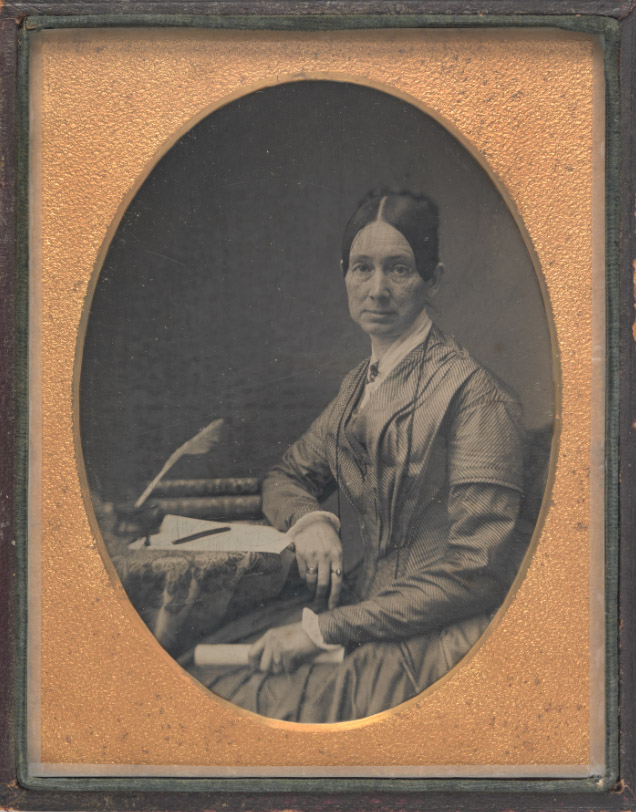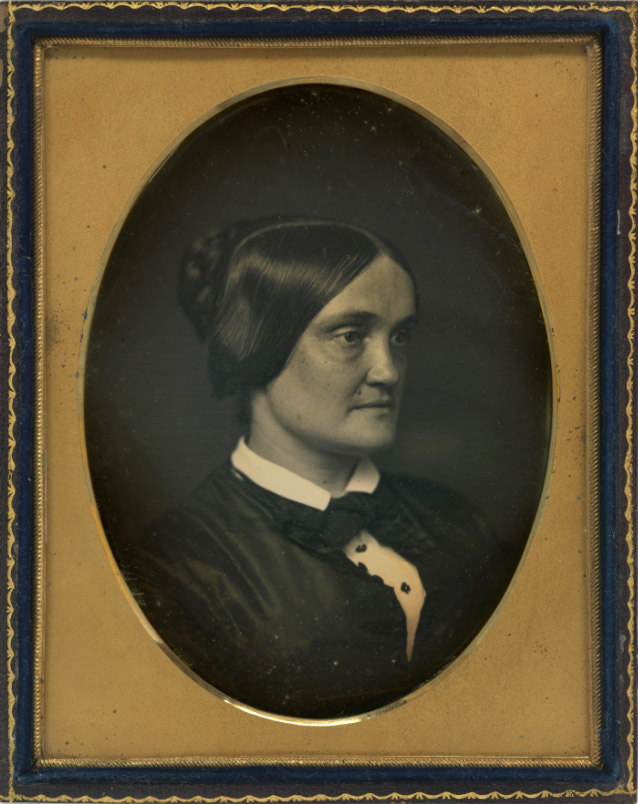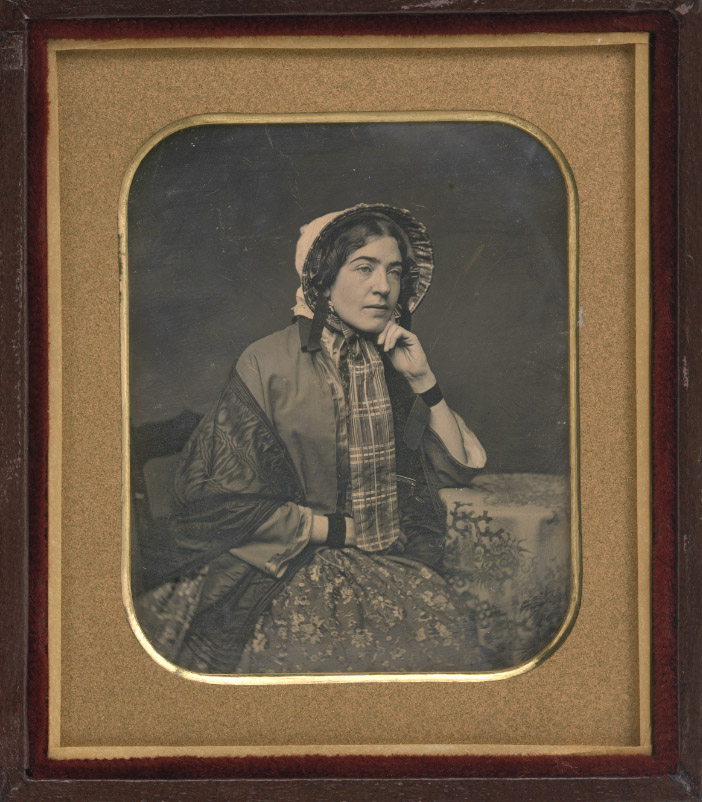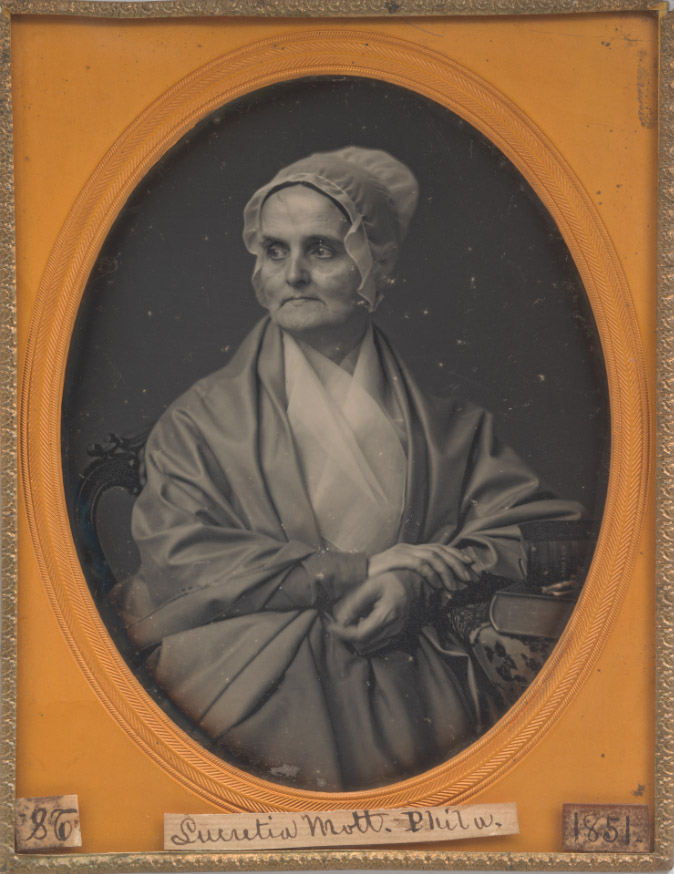In mid-nineteenth-century America, the growing presence of women in public life coincided with the rise of portrait photography. The democratization of portraiture began in earnest in 1839 with the introduction of the daguerreotype—the first practical photographic method. In the spring of 1840, the opening of the first commercial photography studio in the United States signaled a revolution in picture making. While painted portraits had long been luxuries primarily for the well-to-do, photography now made portraiture accessible to men and women across the social and economic spectrum.
The majority of early camera portraits were intended for personal use rather than public consumption. Yet the clarity and detail that made the photographic portrait such an evocative private memento also made it a powerful medium for public portraiture. Photographers often courted those in the public eye, hoping to attract customers by exhibiting portraits of the celebrities who had posed for their cameras. Increasingly, these notable subjects included women, who were making their mark in endeavors as varied as journalism, literature, the theater, abolitionism, and the burgeoning women’s rights movement.
Created between 1846 and 1856, the daguerreotypes and ambrotypes in this exhibition feature the likenesses of more than a dozen memorable American women.












